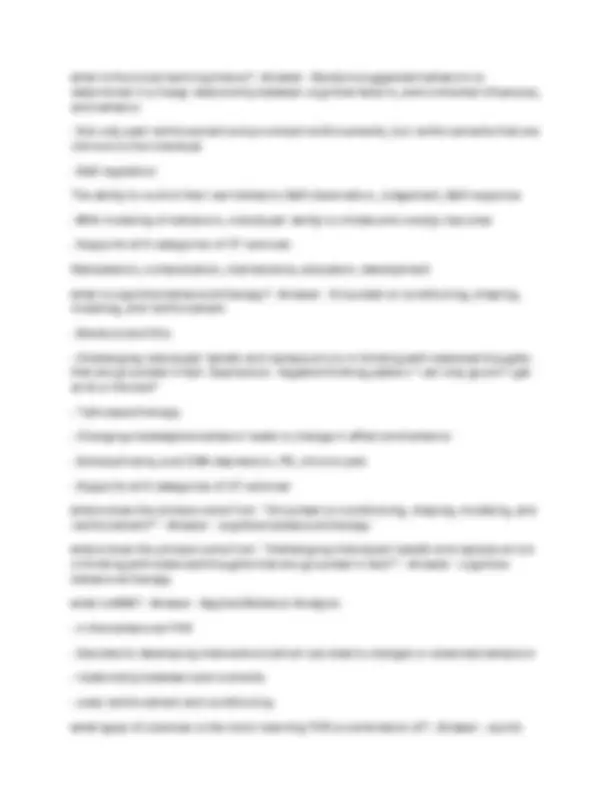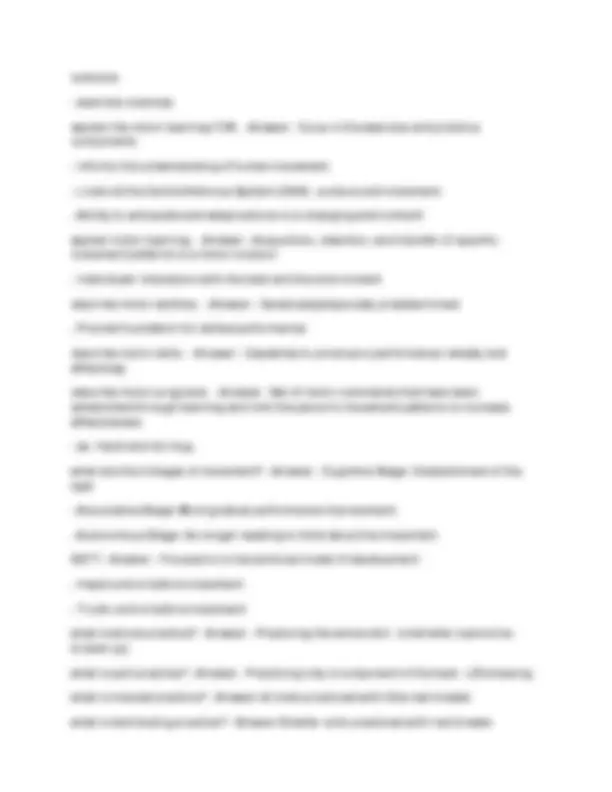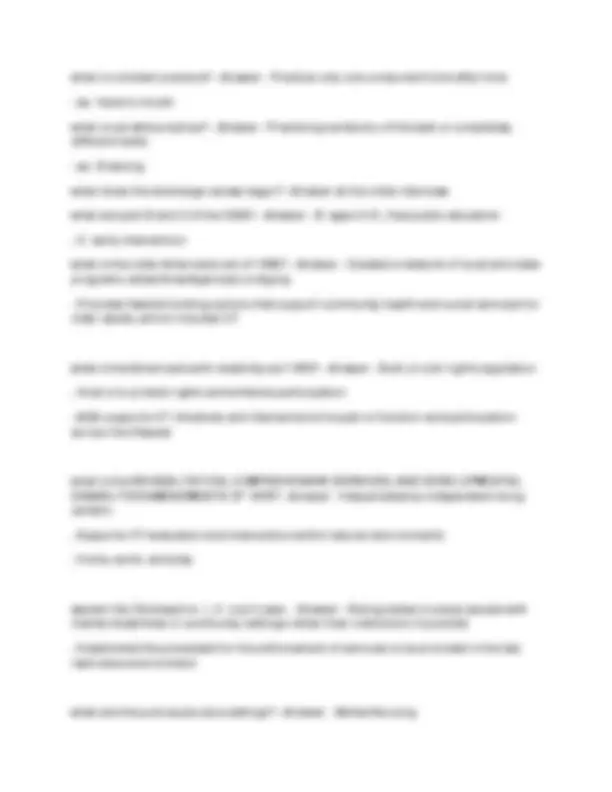





Study with the several resources on Docsity

Earn points by helping other students or get them with a premium plan


Prepare for your exams
Study with the several resources on Docsity

Earn points to download
Earn points by helping other students or get them with a premium plan
Community
Ask the community for help and clear up your study doubts
Discover the best universities in your country according to Docsity users
Free resources
Download our free guides on studying techniques, anxiety management strategies, and thesis advice from Docsity tutors
OTH 330- Final Exam Questions And Correct Answers
Typology: Exams
1 / 6

This page cannot be seen from the preview
Don't miss anything!




at what part of the clinical reasoning process do we decide what intervention to use? - Answer during the hypothesis "An action process by the OT to improve a situation or address a client concern as part of the OT process": - Answer intervention process what are the 3 components of the intervention process? - Answer - plan
sciences
what is constant practice? - Answer - Practice only one component time after time
what is the Americans with disability act 1990? - Answer - Built on civil rights legislation
what is the REHABILITATION, COMPREHENSIVE SERVICES, AND DEVELOPMENTAL DISABILITIES AMENDMENTS OF 1878? - Answer - Helped develop independent living centers
explain the Olmstead vs. L.C. court case. - Answer - Ruling states to place people with mental disabilities in community settings rather than institutions if possible
what are the post acute care settings? - Answer - Skilled Nursing